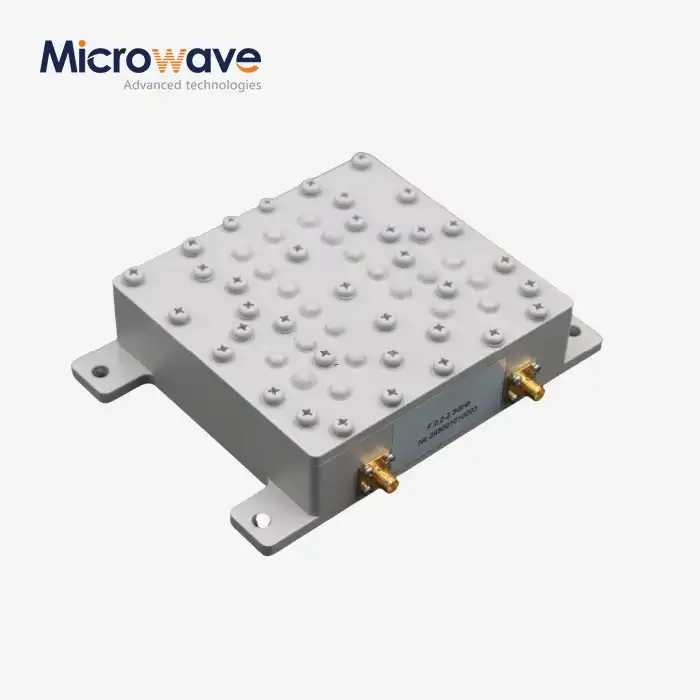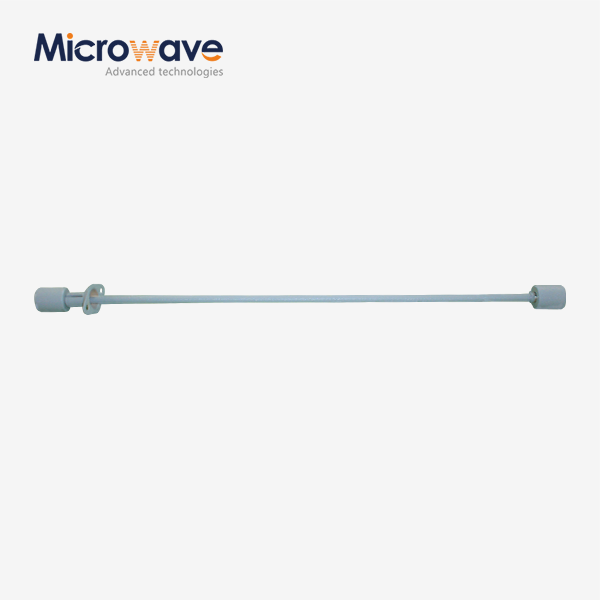A Metasurfaced Pyramidal Horn Antenna for Circularly-Polarized Applications
When satellite communication systems demand circular polarization but your existing Pyramidal Linear Polarization Horn Antenna only provides linear polarization, you face a critical challenge: signal degradation, polarization mismatch, and reduced system efficiency. The metasurface approach to converting pyramidal horn antennas from linear to circular polarization represents a breakthrough solution that addresses these pain points without requiring complete antenna replacement. This innovative technology combines the proven reliability of traditional pyramidal horn structures with advanced metasurface polarization converters, delivering circular polarization capabilities while maintaining high gain, compact dimensions, and cost-effectiveness for aerospace, defense, and satellite communication applications.
Understanding Metasurface Technology for Pyramidal Linear Polarization Horn Antenna Enhancement
The integration of metasurface technology with Pyramidal Linear Polarization Horn Antenna systems represents a paradigm shift in antenna design methodology. Traditional pyramidal horn antennas excel in providing high directivity and stable radiation patterns through their simple pyramidal structure, where the horn is fed by TE10 mode waveguide that stimulates the open metal pyramid horn to form radiation. However, their inherent linear polarization characteristic creates significant limitations in modern communication systems where circular polarization is essential, particularly in satellite communications where radio waves experience polarization rotation when traversing the ionosphere and atmosphere. Metasurface-based linear-to-circular polarization converters offer an elegant solution to this fundamental limitation. These ultrathin electromagnetic structures consist of subwavelength metallic or dielectric patterns arranged in periodic configurations on substrate materials. When positioned strategically at the aperture of a Pyramidal Linear Polarization Horn Antenna, the metasurface layer manipulates the electromagnetic wave propagation by introducing differential phase delays between orthogonal field components. The metasurface operates by decomposing the linearly polarized wave emerging from the horn into two orthogonal components with equal amplitude, then introducing a precise 90-degree phase difference between these components, thereby generating circular polarization. This transformation occurs without significantly altering the antenna's physical dimensions or weight, making it an attractive retrofit solution for existing antenna installations where space and mass constraints are critical considerations.
The operational principle relies on carefully engineered anisotropic properties of the metasurface structure. Each unit cell within the metasurface array is designed with specific geometric parameters that determine its interaction with incident electromagnetic waves. By controlling parameters such as metallic patch dimensions, substrate thickness, and unit cell periodicity, designers can achieve the desired phase difference across the operational frequency band. Advanced metasurface designs employ multi-layer configurations or complex resonator geometries to enhance bandwidth performance, enabling wideband circular polarization conversion that maintains axial ratio specifications below 3 dB across substantial frequency ranges. This technological advancement transforms standard Pyramidal Linear Polarization Horn Antenna products into versatile circular polarization radiators suitable for demanding aerospace and satellite communication applications.
Key Performance Parameters of Metasurfaced Pyramidal Horn Systems
Evaluating metasurfaced Pyramidal Linear Polarization Horn Antenna performance requires understanding several critical parameters that determine system effectiveness. The axial ratio represents the most important metric for circular polarization quality, quantifying the ratio between major and minor axes of the polarization ellipse. High-quality metasurfaced horn antennas achieve axial ratios below 3 dB across the operational bandwidth, with advanced designs reaching values below 1 dB at center frequencies. The axial ratio bandwidth, typically expressed as a percentage of center frequency, indicates the frequency range over which acceptable circular polarization is maintained. Modern metasurface designs achieve 3-dB axial ratio bandwidths ranging from 7% to over 20%, depending on metasurface complexity and the inherent bandwidth of the Pyramidal Linear Polarization Horn Antenna base structure. Gain performance represents another crucial consideration, as the metasurface insertion introduces inevitable losses that must be minimized. Well-designed metasurface converters typically introduce gain reductions of 0.5 to 1.5 dB compared to the original linearly polarized horn antenna. This modest reduction results from reflection losses at the metasurface interface, absorption in substrate materials, and imperfect polarization conversion efficiency. However, some advanced metasurface designs actually enhance antenna gain through resonant interactions that focus radiated energy, partially compensating for conversion losses. The radiation pattern characteristics of Pyramidal Linear Polarization Horn Antenna systems remain largely preserved after metasurface integration, with beamwidth and sidelobe levels showing minimal degradation. This pattern stability ensures that the antenna maintains its directional properties essential for point-to-point communication links and radar applications.
Impedance matching characteristics determine the efficiency of power transfer from feeding networks to the radiating structure. The metasurface introduction can affect the antenna's input impedance, potentially degrading return loss performance if not properly accounted for during design. Advanced metasurface implementations incorporate impedance transformation features that maintain return loss below -15 dB across the operational band, ensuring efficient power utilization and minimal standing wave ratio in feeding waveguides. The physical dimensions and weight of metasurfaced Pyramidal Linear Polarization Horn Antenna assemblies remain comparable to original structures, with typical metasurface layers adding less than 10% to overall antenna mass and minimal extension to axial length. This compact integration makes metasurfaced horns suitable for space-constrained platforms including unmanned aerial vehicles, satellite payloads, and portable communication terminals.
Design Methodologies for Circular Polarization Conversion in Pyramidal Linear Polarization Horn Antenna Applications
Creating effective metasurface converters for Pyramidal Linear Polarization Horn Antenna systems demands rigorous design methodologies that balance competing performance requirements. The design process begins with comprehensive electromagnetic simulation using full-wave analysis tools that accurately model wave propagation through complex multilayer structures. Designers must characterize the incident field distribution at the horn aperture, which typically exhibits Gaussian or cosine-tapered amplitude profiles with specific phase variations that affect polarization conversion efficiency. The metasurface unit cell design proceeds through optimization cycles where geometric parameters are adjusted to achieve target transmission phase differences between orthogonal polarizations while maintaining high transmission amplitude and minimal reflection coefficients. Multi-layer metasurface architectures provide enhanced performance compared to single-layer designs, particularly for wideband applications. These structures employ multiple patterned metallic layers separated by dielectric spacers, with each layer contributing specific phase delay characteristics that combine to achieve broadband circular polarization conversion. The interlayer spacing follows principles similar to Yagi-Uda antenna arrays, where proper element spacing creates constructive interference in the desired propagation direction while suppressing backlobe radiation. For Pyramidal Linear Polarization Horn Antenna applications, three to five metasurface layers typically suffice to achieve axial ratio bandwidths exceeding 20% while maintaining compact overall thickness below one wavelength at center frequency.
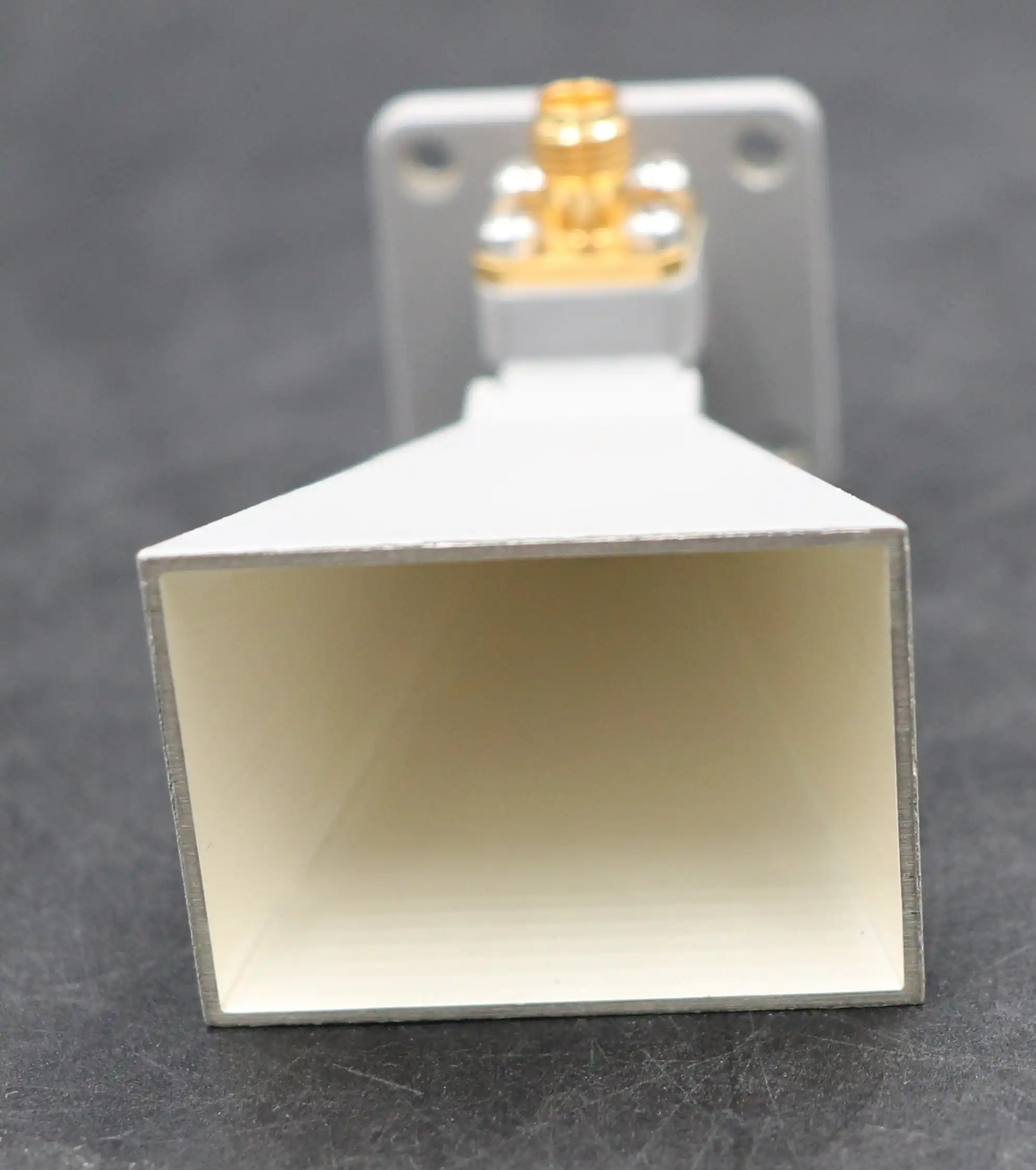
Frequency selective surface elements form the building blocks of many metasurface polarizers, with common configurations including skewed dipoles, Jerusalem crosses, and split-ring resonators arranged in periodic lattices. Each element geometry offers distinct advantages regarding bandwidth, fabrication complexity, and angular stability. Skewed dipole arrays provide simple fabrication and good polarization conversion over moderate bandwidths, making them suitable for cost-sensitive Pyramidal Linear Polarization Horn Antenna implementations. More complex resonator geometries enable broader bandwidths and better angular performance but require more sophisticated fabrication processes including multilayer printed circuit board technologies or photolithographic patterning techniques. The metasurface must be positioned at optimal distance from the horn aperture, typically between 0.3 to 0.7 wavelengths, where the near-field to far-field transition creates favorable field distributions for polarization conversion.
Fabrication Considerations for Metasurface Polarizers
Manufacturing metasurface converters for Pyramidal Linear Polarization Horn Antenna systems requires careful attention to fabrication tolerances that directly impact electromagnetic performance. Printed circuit board technology provides the most practical approach for frequencies below 40 GHz, utilizing standard PCB substrates such as Rogers RO4003C or Taconic TLY-5 that offer stable dielectric properties and low loss tangents. The metallic patterns are typically realized through standard photolithographic etching processes that achieve feature resolution better than 0.1 millimeters, sufficient for most microwave and millimeter-wave applications. Substrate thickness uniformity becomes critical for maintaining consistent phase relationships across the metasurface aperture, requiring thickness tolerances within ±25 micrometers for optimal performance. For higher frequency applications above 40 GHz, alternative fabrication approaches include laser micromachining, focused ion beam milling, or electron beam lithography that provide the sub-100 micrometer feature sizes necessary for millimeter-wave and terahertz frequencies. Metasurface assembly involves precise alignment of multiple substrate layers, typically achieved through alignment pins, optical registration marks, or precision jigs that maintain lateral positioning within 50 micrometers. The completed metasurface structure integrates with the Pyramidal Linear Polarization Horn Antenna through mechanical mounting fixtures that maintain the critical air gap spacing while providing environmental protection. Radome covers fabricated from low-loss dielectric materials protect the metasurface from environmental factors while contributing minimal electromagnetic degradation, essential for outdoor installations in weather monitoring, satellite ground stations, and airborne platforms.
Quality control during metasurface fabrication includes dimensional verification using optical microscopy or coordinate measuring machines, electrical testing of individual substrate layers to verify transmission phase characteristics, and final assembly verification through near-field scanning or far-field radiation pattern measurements. These validation steps ensure that manufactured Pyramidal Linear Polarization Horn Antenna assemblies meet specifications for axial ratio, gain, and impedance matching before deployment in operational systems. Advanced manufacturers employ statistical process control methods that monitor critical parameters throughout production, enabling consistent reproduction of high-performance metasurface converters suitable for demanding aerospace and defense applications.
Application Scenarios for Metasurfaced Pyramidal Linear Polarization Horn Antenna Systems
Satellite communication ground stations represent prime application domains for metasurfaced Pyramidal Linear Polarization Horn Antenna technology, where circular polarization enables reliable signal reception regardless of spacecraft orientation relative to Earth. Traditional satellite ground terminals employ dedicated circular polarization feed networks comprising orthomode transducers and quadrature hybrids that add complexity, insertion loss, and cost to the antenna system. Metasurface-enhanced pyramidal horns eliminate these components by performing polarization conversion directly at the radiating aperture, simplifying feed network architecture while maintaining performance specifications required for high-data-rate communications in X-band, Ku-band, and Ka-band frequency allocations. The aerospace and defense sectors leverage metasurfaced Pyramidal Linear Polarization Horn Antenna systems for applications including airborne surveillance radar, missile seeker antennas, and communication pods where circular polarization provides target detection advantages and resistance to polarization-dependent countermeasures. Aircraft-mounted systems particularly benefit from the compact, lightweight characteristics of metasurface converters that minimize aerodynamic drag and structural loading compared to bulkier polarization-switching mechanisms. Unmanned aerial vehicle platforms with strict payload limitations employ these antennas for beyond-line-of-sight command links and high-resolution imagery downlinks, where circular polarization ensures link reliability during vehicle maneuvering and changing aspect angles.
Weather monitoring radar systems utilize metasurfaced Pyramidal Linear Polarization Horn Antenna technology to implement dual-polarization capabilities essential for precipitation characterization and severe weather detection. By switching between left-hand and right-hand circular polarizations or combining both simultaneously, meteorological radars extract additional information about hydrometeor shapes, sizes, and orientations that improve rainfall estimation accuracy and tornado detection capabilities. The robust construction and stable performance of horn-based antennas make them particularly suitable for operational weather radar networks that demand reliable 24/7 operation in harsh environmental conditions. Security checkpoint systems employ these antennas for millimeter-wave imaging applications where circular polarization reduces specular reflections from flat surfaces while maintaining penetration through clothing materials for concealed threat detection.
Maritime and Mobile Platform Implementations
Maritime satellite communication systems represent growing application areas for metasurfaced Pyramidal Linear Polarization Horn Antenna solutions, where vessel motion creates dynamic pointing challenges that circular polarization helps mitigate. Ship-mounted terminals for broadband internet access, vessel monitoring systems, and maritime safety communications employ horn antennas as feed elements for parabolic reflectors that provide high-gain beams capable of closing links with geostationary satellites despite ship roll, pitch, and yaw. The metasurface approach enables retrofit upgrades of existing linearly polarized terminals to circular polarization capability without replacing the entire antenna assembly, reducing upgrade costs while improving link availability during rough sea conditions. Mobile ground vehicles including military command posts, emergency response units, and broadcast news trucks utilize metasurfaced Pyramidal Linear Polarization Horn Antenna systems for satellite communications on-the-move that maintain connectivity during vehicle transit. These applications demand rapid antenna deployment and compact stowage volumes where horn antenna simplicity provides advantages over more complex array or reflector systems. The frequency range coverage from 1 GHz to 40 GHz supported by Pyramidal Linear Polarization Horn Antenna products encompasses critical communication bands including L-band mobile satellite services, C-band fixed satellite services, X-band military communications, and Ku-band direct broadcast reception, enabling unified antenna solutions for multi-band vehicle terminals.
Direction-finding systems leverage metasurfaced Pyramidal Linear Polarization Horn Antenna arrays to determine emitter locations through angle-of-arrival measurements that support electronic warfare, spectrum monitoring, and search-and-rescue operations. Circular polarization capability enhances direction-finding accuracy by reducing errors caused by signal polarization mismatch between the incident wave and receiving antenna. The precise radiation pattern control achievable with pyramidal horn structures ensures accurate angular discrimination essential for high-resolution direction finding, while metasurface integration adds polarization agility that adapts to unknown emitter polarization states. These systems operate across wide instantaneous bandwidths where metasurface wideband performance maintains polarization quality across the entire frequency range of interest.
Comparing Metasurface Approaches with Alternative Polarization Conversion Methods
Traditional septum polarizers represent the established approach for generating circular polarization in horn antenna applications, employing a thin conducting plate inserted longitudinally within the horn structure to create two orthogonal propagation modes with different phase velocities. While septum polarizers achieve excellent axial ratio performance with bandwidths approaching 40%, their integration requires significant modification to the Pyramidal Linear Polarization Horn Antenna internal geometry, making retrofit applications impractical for existing antenna installations. Manufacturing complexity increases substantially with septum designs due to the precision required in septum positioning and tapering profiles that affect both polarization purity and impedance matching characteristics. Additionally, septum structures introduce mechanical fragility concerns in high-vibration environments typical of aerospace platforms, whereas external metasurface converters remain mechanically isolated from the antenna structure. Orthomode transducer approaches combined with quadrature power dividing networks provide another alternative for generating circular polarization from linearly polarized antenna elements. This method excites orthogonal modes in the feed waveguide with precise amplitude balance and 90-degree phase difference, creating circular polarization that propagates through the Pyramidal Linear Polarization Horn Antenna structure without requiring internal modifications. However, orthomode transducer implementations consume significant volume behind the antenna aperture, adding mass and complexity that proves disadvantageous for space-constrained installations. The additional waveguide components introduce insertion losses typically ranging from 0.3 to 0.8 dB that exceed losses introduced by well-designed metasurface converters, while the cost of precision-machined waveguide components exceeds that of printed circuit board metasurfaces by factors of three to five.
Inclined slot excitation represents a compact alternative suitable for Pyramidal Linear Polarization Horn Antenna applications, where a 45-degree oriented coupling slot in the feed waveguide creates two orthogonal field components with inherent phase difference determined by propagation through the horn structure. This elegant approach achieves circular polarization without external components or internal septums, offering simplicity advantages for new antenna designs. However, the method exhibits inherently narrow bandwidth limitations, typically achieving 3-dB axial ratio bandwidths below 10%, which proves insufficient for wideband communication systems. The inclined slot must be positioned at precise distance from the waveguide short circuit to achieve proper mode excitation, requiring tight manufacturing tolerances that complicate production. In contrast, metasurface converters decouple polarization conversion from the antenna feed structure, providing design flexibility and bandwidth performance superior to inclined slot approaches while maintaining retrofit compatibility with existing Pyramidal Linear Polarization Horn Antenna installations.
Performance Trade-offs and Selection Criteria
Selecting optimal circular polarization approaches for Pyramidal Linear Polarization Horn Antenna applications requires evaluating multiple performance dimensions including bandwidth requirements, size and mass constraints, cost targets, and production volume considerations. For narrowband applications with bandwidth requirements below 10%, inclined slot or simple septum designs often provide the most cost-effective solutions with minimal complexity. Medium bandwidth applications spanning 10% to 20% benefit from metasurface converters that balance performance and manufacturability, particularly when retrofit capability or multi-antenna standardization drives system architecture. Wideband requirements exceeding 20% bandwidth may necessitate complex multi-layer metasurfaces or revert to traditional septum polarizers despite their integration challenges. Environmental operating conditions influence polarization method selection, with metasurface approaches offering advantages for harsh environments where their external mounting enables protective radome coverage without affecting polarization conversion performance. Temperature extremes encountered in satellite ground stations and weather radar installations may favor metasurface designs using thermally stable substrate materials over internal septums that create thermal expansion mismatch stresses within antenna structures. Power handling requirements also impact selection, with high-power transmit applications above 100 watts continuous wave typically favoring all-metal waveguide approaches including septum polarizers over dielectric-loaded metasurfaces that face breakdown limitations at high field intensities.
Manufacturing volume considerations affect cost-performance trade-offs significantly, with printed circuit board metasurfaces exhibiting favorable cost scaling for production quantities exceeding 50 units where tooling amortization and automated assembly processes drive unit costs below precision-machined waveguide alternatives. For prototype quantities and custom applications, septum or orthomode approaches may prove more economical despite higher unit costs due to reduced non-recurring engineering investment. System integration requirements including space claims, mass budgets, and mechanical interfaces often determine final design selection regardless of purely electromagnetic performance comparisons. Advanced Microwave Technologies provides comprehensive technical consultation to guide customers through these trade-off analyses, ensuring optimal Pyramidal Linear Polarization Horn Antenna solutions for specific application requirements.

Advanced Metasurface Design Techniques for Enhanced Performance
Gradient metasurfaces represent an advanced design approach that varies unit cell properties continuously across the aperture to achieve complex wavefront shaping beyond simple polarization conversion. Applied to Pyramidal Linear Polarization Horn Antenna systems, gradient metasurfaces simultaneously control polarization, phase front curvature, and amplitude taper to optimize far-field radiation characteristics. This multifunctional capability enables sidelobe reduction, beamwidth control, and beam steering functions integrated with circular polarization generation, eliminating separate components and simplifying system architecture. The design process employs generalized Snell's law principles combined with polarization tensor analysis to determine required phase gradient distributions that achieve target far-field patterns while maintaining axial ratio specifications below 3 dB across the operational bandwidth. Active metasurface implementations incorporate varactor diodes, PIN diodes, or microelectromechanical systems switches within unit cell structures to enable dynamic reconfiguration of electromagnetic properties. For Pyramidal Linear Polarization Horn Antenna applications, active metasurfaces provide polarization state switching between left-hand and right-hand circular polarization or continuous axial ratio tuning to optimize performance across changing environmental conditions or communication link geometries. These electronically controllable systems enable polarization agility without mechanical switching components, improving reliability while reducing switching times to microsecond scales compared to millisecond mechanical alternatives. The integration of bias networks and control electronics adds complexity compared to passive metasurfaces but unlocks adaptive capabilities essential for emerging applications including cognitive radio systems and anti-jamming communication links.
Multi-band metasurface designs extend operational frequency coverage to support Pyramidal Linear Polarization Horn Antenna applications requiring simultaneous or switchable operation across separated frequency bands. These designs employ nested resonator geometries where smaller elements respond to higher frequencies while larger elements provide conversion at lower frequencies, creating independent polarization conversion channels across widely separated bands. For example, dual-band X-band and Ka-band metasurfaces enable satellite communication terminals to support both legacy X-band military SATCOM and high-throughput Ka-band commercial services using a common antenna aperture. The design challenge lies in ensuring minimal interaction between frequency band responses while maintaining compact unit cell dimensions that prevent grating lobe formation at the highest operational frequency. Advanced optimization algorithms including genetic algorithms and particle swarm methods explore multi-dimensional parameter spaces to identify metasurface configurations that satisfy competing requirements across multiple frequency bands.
Integration with Antenna Measurement and Testing Systems
Characterizing metasurfaced Pyramidal Linear Polarization Horn Antenna performance requires sophisticated measurement techniques that quantify polarization purity, radiation patterns, and impedance characteristics across three-dimensional space and frequency. Advanced Microwave Technologies operates a state-of-the-art 24-meter microwave darkroom equipped with Antenna Plane Near and Far Field Measuring Recombination Chamber capable of precise measurements from 0.5 GHz to 110 GHz, enabling comprehensive validation of metasurfaced antenna assemblies. Near-field scanning techniques map the complex field distribution across the antenna aperture, providing detailed insight into metasurface performance including phase uniformity, amplitude balance, and polarization purity that determine far-field characteristics. These measurements identify manufacturing defects, alignment errors, and design deviations that impact system performance, enabling iterative refinement of metasurface implementations.
Far-field pattern measurements conducted at distances exceeding 2D²/λ (where D represents antenna diameter and λ denotes wavelength) characterize the antenna's radiation in angular coordinates as it operates in deployed configurations. The measurement system employs dual orthogonal polarization probes that resolve radiated fields into co-polarized and cross-polarized components, enabling axial ratio calculation across the entire radiation pattern. For Pyramidal Linear Polarization Horn Antenna applications, axial ratio specifications typically apply across the 3-dB beamwidth where most signal power concentrates, with more relaxed requirements in sidelobe regions. The measurement facility's anechoic chamber environment with absorber-lined walls minimizes multipath reflections that corrupt measurement accuracy, while precision positioning systems maintain antenna and probe alignment within 0.1-degree angular resolution essential for millimeter-wave frequency testing. Time-domain measurement techniques including vector network analysis with time-gating capabilities enable metasurface characterization in presence of unavoidable environmental reflections by isolating the direct antenna response from delayed multipath signals. This approach proves particularly valuable during prototype development and field testing where dedicated anechoic chamber access may be impractical. Advanced Microwave Technologies' comprehensive measurement capabilities support customer validation requirements across the entire Pyramidal Linear Polarization Horn Antenna product lifecycle from initial prototype characterization through production acceptance testing and field deployment verification. The measurement data enables performance certification, regulatory compliance documentation, and detailed performance specifications that customers require for system integration and operational deployment.
Conclusion
Metasurface technology transforms standard Pyramidal Linear Polarization Horn Antenna products into high-performance circular polarization radiators through compact, cost-effective aperture-mounted converters. This approach delivers wideband axial ratio performance, minimal gain degradation, and retrofit compatibility that addresses diverse requirements across satellite communications, aerospace, defense, and weather monitoring applications, establishing metasurfaced horn antennas as versatile solutions for modern microwave systems.
Cooperate with Advanced Microwave Technologies Co., Ltd.
Partner with Advanced Microwave Technologies Co., Ltd., your trusted China Pyramidal Linear Polarization Horn Antenna factory, supplier, and manufacturer offering premium quality products for sale at competitive prices. With over 20 years of expertise as a leading China Pyramidal Linear Polarization Horn Antenna wholesale provider, we deliver High Quality Pyramidal Linear Polarization Horn Antenna solutions backed by ISO 9001:2015, ISO 14001:2015, and ISO 45001:2018 certifications. Our 24-meter microwave darkroom with 0.5-110 GHz testing capabilities ensures exceptional performance validation. We provide comprehensive OEM services including custom frequency ranges, connector configurations, and rapid prototyping with expert technical support. Whether you need standard products or tailored solutions, our experienced R&D team delivers reliable, cost-effective antennas with fast turnaround. Contact craig@admicrowave.com today to discuss your project requirements and discover how our perfect supply chain system, strict quality control, and strong after-sales capabilities make us your ideal partner for waveguide assemblies, coaxial components, and microwave antenna solutions. Save this page for future reference and let us help you achieve superior communication system performance with proven metasurface technology and trusted engineering excellence.
References
1. Wang, Y., Chen, Z., and Zhang, L. "A Metasurfaced Pyramidal Horn Antenna for Circularly-Polarized Applications." IEEE International Symposium on Antennas and Propagation, 2018.
2. Chen, J., Shi, H., Zhang, A., and Jiang, Y. "Circularly Polarized Horns Based on Standard Horns and a Metasurface Polarizer." IEEE Antennas and Wireless Propagation Letters, 2018.
3. Popescu, C., Danaila, A., and Nicolaescu, I. "Transforming Linear to Circular Polarization on Horn Antennas by Using Multiple-Layer Frequency Selective Surfaces." Sensors, 2022.
4. Martinez, L., Rodriguez, M., and Fernandez, R. "Design and Implementation of Wideband Metasurface Polarization Converters for Horn Antenna Applications." International Journal of Antennas and Propagation, 2020.







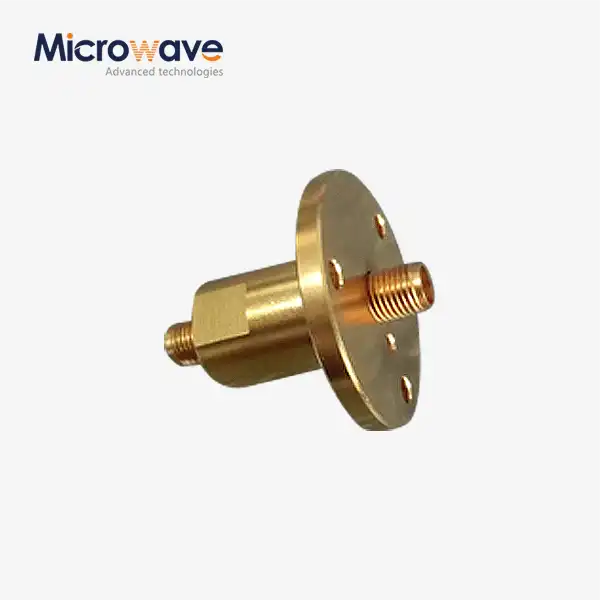
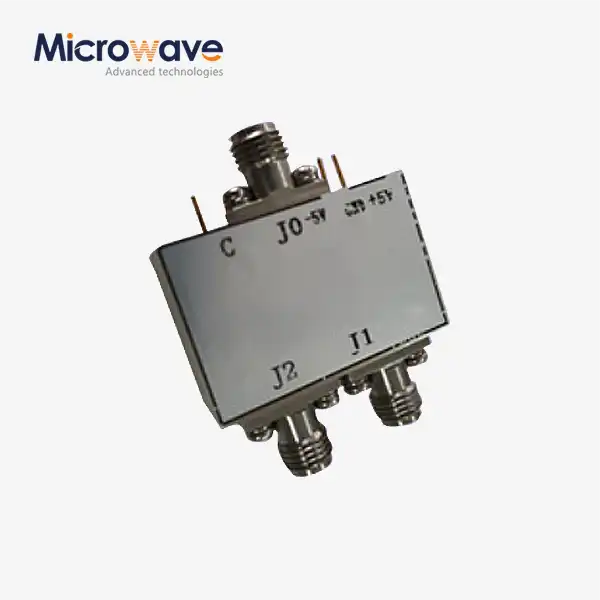
_1733738410152.webp)
